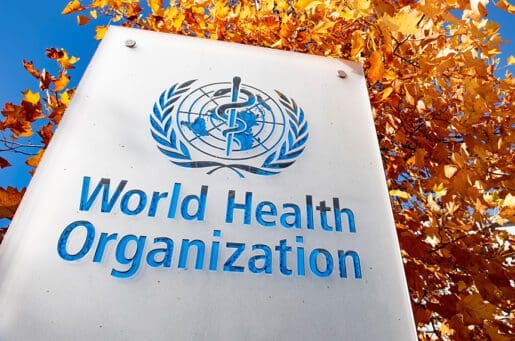Bioethics Forum Essay
OHRP’s Dangerous Draft Guidance
In October, the federal Office for Human Research Protections issued a “Draft Guidance on Disclosing Reasonably Foreseeable Risks in Research Evaluating Standards of Care.” It follows the controversy that erupted in 2013 over the SUPPORT study of oxygen therapy for premature babies. The draft guidance attempts to clarify federal regulations regarding the informed consent process.
We believe that the draft guidance would lead to an approach to informed consent that would predictably mislead patients rather than inform them. We propose a different and more honest, accurate, and empowering approach to informed consent, specifically tailored for research evaluating widely used medical practices that have uncertain value.
The key question in research on standard medical practices is this: Which risks should be considered to be risks of the research and which should be considered the risks of standard medical practices? As emphasized in the Belmont Report and in previous guidance, the risks that patients would incur if not participating in research should not be considered to be risks of research. Instead, the risks of research are only the incremental risks of the research itself.
The draft guidance blurs this distinction. It conveys the impression that any alteration in the care that a patient would receive if enrolled in a study, compared to what that patient would have received outside the study, will create a reasonably foreseeable risk for that patient.Virtually all therapies have identified risks. Thus, virtually any alteration in the care that a patient would receive if enrolled in a study, compared to what that patient would have received outside the study, would be considered create a reasonably foreseeable incremental risk for that patient.
This view of research risks implicitly suggests that the care that every patient receives is the safest possible care for that patient. That simply cannot be true. After all, we know that, despite the diligent attempts of physicians to discharge their clinical responsibility to further their patient’s welfare, doctors often disagree about which treatment is best. Their practices vary accordingly. We know that variations in practices cannot be fully explained by recognized or evidence-based clinical indications. Instead, such variation seems to be based on a combination of physician preferences, formulary choices, practice guidelines, or other factors. Further, we know that many widely used therapies have later been found to be ineffective or harmful when properly studied. See here, here, and here.
We also know – from three different meta-analyses– that patients in randomized trials have outcomes that are comparable to those of patients outside of studies. Those studies are in CMAJ, BMJ, and PLOS Medicine. Being in a study does not, in itself, create a reasonably foreseeable risk. By implying that all reasonably foreseeable treatment risks be treated de facto as research risks and specified as such on the consent forms for research, the draft guidance would mandate consent forms that were inherently misleading. Such forms would convey that the research is riskier than it actually is. This would discourage people from enrolling in proper clinical trials. As a result, therapies will be widely used that may be truly ineffective or harmful.
We suggest a different approach to informed consent that would more accurately apprise potential study participants of the risks that they face and the choices that they must make. Our proposal applies to the same category of research as the draft guidance – that is, research evaluating standards of care – which might be better described as research on medical practices. We assume that, for this type of research, there are multiple approaches to treatment (including no treatment when the available therapies may not be beneficial) for any patient with the particular problem that is the focus of the research. We recommend that the informed consent process be divided into two parts, followed by a choice:
Part I: Informed consent for treatment when there is uncertainty about which treatment is best.
Consent for treatment would include a description of the patient’s disease, the treatment options that are available, and the known risks and benefits of those treatment options. Patients should be informed that different doctors recommend different treatments for patients in their situation. They should be told of the most common and serious risks and the most likely benefits of each treatment. During this phase of informed consent, patients should be informed that they can choose among the available treatment options. They should be informed that their physician would, of course, assist and guide them in making this treatment choice.
Part II: Informed consent for research when there is uncertainty about which treatment is best.
The second part of the consent process should describe the possibility of enrolling in a clinical trial to evaluate the treatments that are being offered. As part of this discussion, the patient should be informed about any incremental risks that are associated with participation in a research protocol designed to evaluate the treatments for which there is known practice variation. If the study is to be a randomized trial, then potential study participants should be informed about randomization. Easily accessed methods to simply and clearly explain randomization in such trials are now available.
The description of the risks and potential benefits in both Parts I and II should be in accordance with the best practices suggested by both health literacy research and federal guidance on plain language. Documents should provide clear, concise information about the most important risks and potential benefits, supplemented by more comprehensive information for patient/participants’ later reference. Decision aids should be used where appropriate. Verbal dialogue tailored to patient/participants’ needs and preferences is at least as important as written materials.
The Choice:
Patients would then have a choice. They could opt for one of the available treatments, under the guidance of their physicians. Or they could opt to participate in the research and to be randomized, if that is part of the study protocol.
In either case, patients would also be asked for permission to collect data on their outcomes. This would allow comparisons of outcomes for patients who were randomized with those who chose their treatment based on their preferences.
We recognize that this approach to informed consent would change the current process for both clinical care and for clinical research that involves evaluation of current medical practices. This approach would require more discussion than is currently common for clinical care. It would reframe the risks of research. We believe that this approach would lead to more accurate information about both clinical care and research and would empower patients to make choices that are more consistent with their own values and preferences.
We recognize that neither institutional review boards nor OHRP has the power to regulate the consent process for clinical care. However, building this approach into the consent process for research on medical practices would clarify the options that are available for clinical care, clarify the known risks and potential benefits of the various standards of care, and clarify the incremental risks of participating in research Moreover, this approach would help promote the principles of beneficence and respect for persons whenever therapies of unclear value are used by ensuring that the options for their care are explained, and thus empower patients to make choices that are more consistent with their own values and preferences.
John D. Lantos, MD, is professor of pediatrics at the University of Missouri-Kansas City; Carl D’Angio, MD, is professor of pediatrics and medical humanities and Bioethics and director of the research ethics program at the University of Rochester Medical Center; David Magnus, PhD, is director of the Center for Biomedical Ethics and Thomas A. Raffin Professor of Medicine and Biomedical Ethics and Professor of Pediatrics at Stanford University; Bray Patrick-Lake, MFS, is a patient representative at the Duke Translational Medicine Institute; Jon Tyson, MD, is professor of pediatrics at the University of Texas Medical School at Houston; Benjamin Wilfond, MD, is director of the Treuman Katz Center for Pediatric Bioethicsand professor of pediatrics at theUniversity of Washington School of Medicine.
Posted by Susan Gilbert at 12/21/2014 08:14:52 PM |












